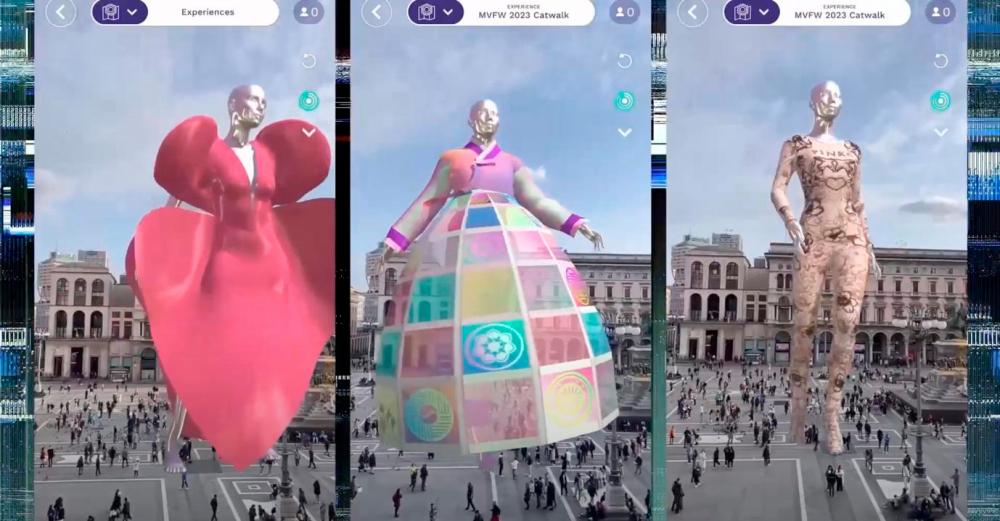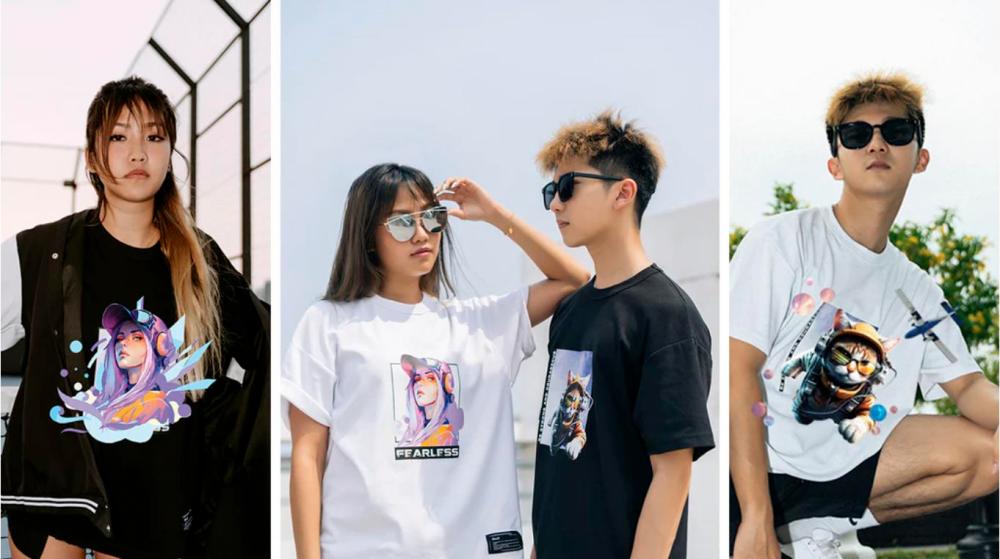IN today’s rapidly advancing technological landscape, the multibillion-dollar fashion industry is embracing innovation.
A year ago, local Malaysian fashion brand Bee3 captivated consumers with a printed T-shirt that presented an interactive augmented reality (AR) experience. Upon scanning the print, a dynamic and vivid 3D animated artwork came to life. This idea can be traced back to 2021 and 2022, when Louis Vuitton utilised AR engaging prints in its collections as a way to immerse audience.
Digital runways
Simple AR engaging prints are not the only option for fashion brands. During Milan’s Fashion Week in March last year, the busy streets of Piazza of Duomo di Milano transformed into a digital runway. Mobile devices had become portals to a fashion universe, where audiences were able to display AR models walking the streets showcasing digital fashion collections. The spectacular fusion of reality and virtuality presented an extended reality immersive experience for fashion enthusiasts.
Such immersive environments emerged as a popular trend within the fashion industry inspired by engaging experiences of gameplay. Fashion brands collaborated with game developers to create engaging platforms for consumers, sustaining the industry during the tough times of the pandemic by attracting new customers.
For example, in the Louis Vuitton and “League of Legends” collaboration in 2019, the brand created outfits for iconic in-game characters, marking a significant turning point in the trend. Other brands like Nike followed suit, with successful “Nikeland” game launch on Roblox that attracted more than 7 million players in just one year.
Virtual collections
With almost half of all global gamers residing in the Asia-Pacific region, fashion brands in this area are increasingly investing in creating immersive collaborations as a means to capture this profitable market.
Malaysia, as one of the leading Asian gaming markets, has become a solid destination for in-game collaborations, with an average of 14 million players spending one to three hours per week on games and making significant in-game purchases – placing the country at 21st in global gaming revenue.
These significant collaborations between fashion and gaming industries have led to the emergence of digital fashion weeks alongside traditional fashion calendars, creating opportunities for emerging designers and small brands to showcase their virtual collections in the form of non-fungible tokens and digital twins.
Talent migration
At the same time, the migration of talents from the technology industry, driven by Covid-19-induced layoffs, has also played a role in the growth of virtual fashion environments and the creation of immersive platforms. Programmers and user interface/user experience designers have found new opportunities in the fashion world, leading to a transformative shift in how technology is integrated after years of admiring haute couture, handcrafted and luxurious fashion pieces.
This shift in the fashion industry has become increasingly evident, leading fashion schools to incorporate virtual and three-dimensional design software, such as Clo3d and Style3D, into their main curricula, while providing students with technology core classes opportunities, including coding and artificial intelligence algorithms. These efforts have not only helped to bridge the skills gap in the fashion industry but have also transformed the way fashion is created and presented.
Great accessibility
Additionally, to tackle sustainability issues in the fashion industry, brands have provided virtual garments in the form of AR filters to social media influencers, minimising the need for physical collections for photoshoots and marketing purposes. AR filters have become another popular interactive tool for consumers to try on clothing, take personal photos, and share them on social media, which enhances brands’ online engagement. E-commerce platforms on the other hand have benefited greatly as consumers can now try on items before making a purchase, reducing return rates.
The world of fashion is experiencing a significant and lasting transformation. It has become more engaging and accessible in an exciting new era. The industry’s move towards technology and extended immersive experiences is not simply a passing trend, but a permanent shift that will shape the future of fashion in dynamic ways.
This article is contributed by Dr Alshaimaa Alanadoly, senior lecturer in fashion design technologies at The Design School, Faculty of Innovation & Technology, Taylor’s University.










